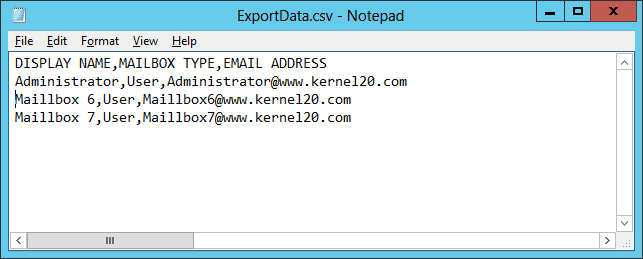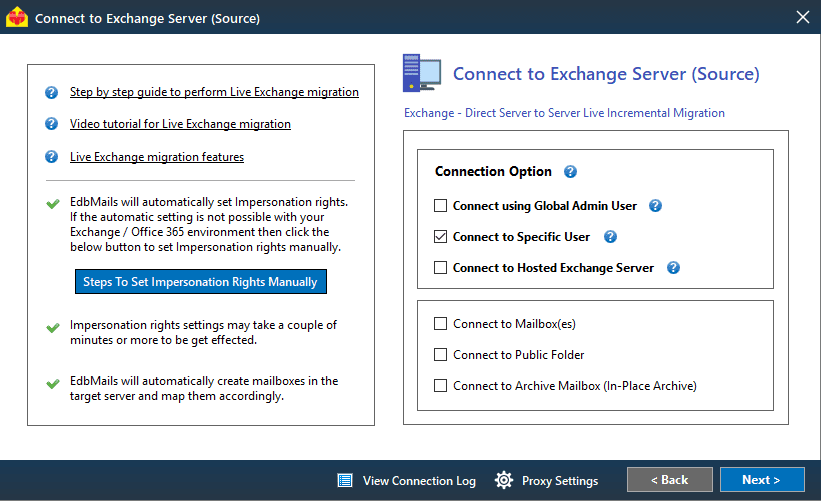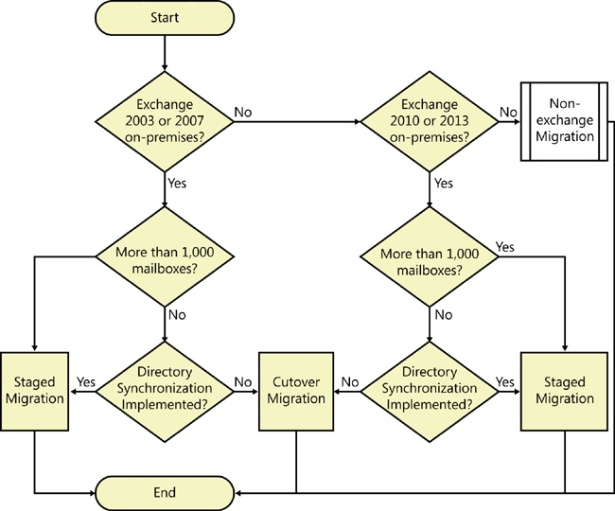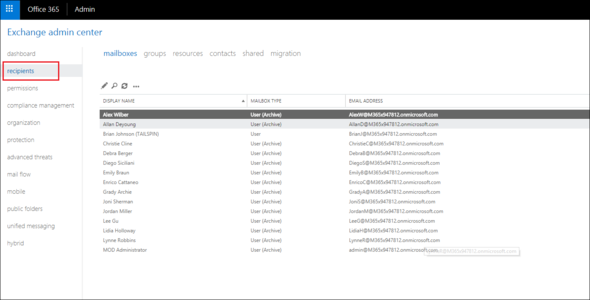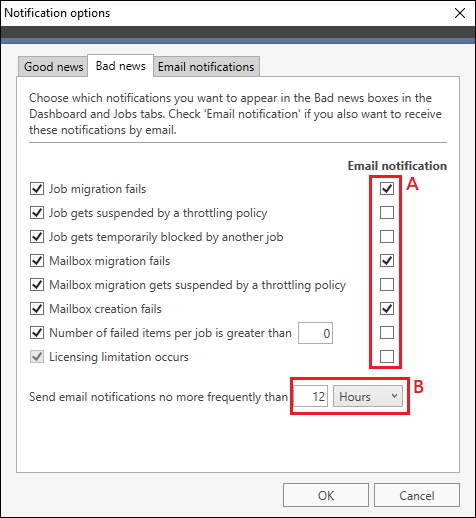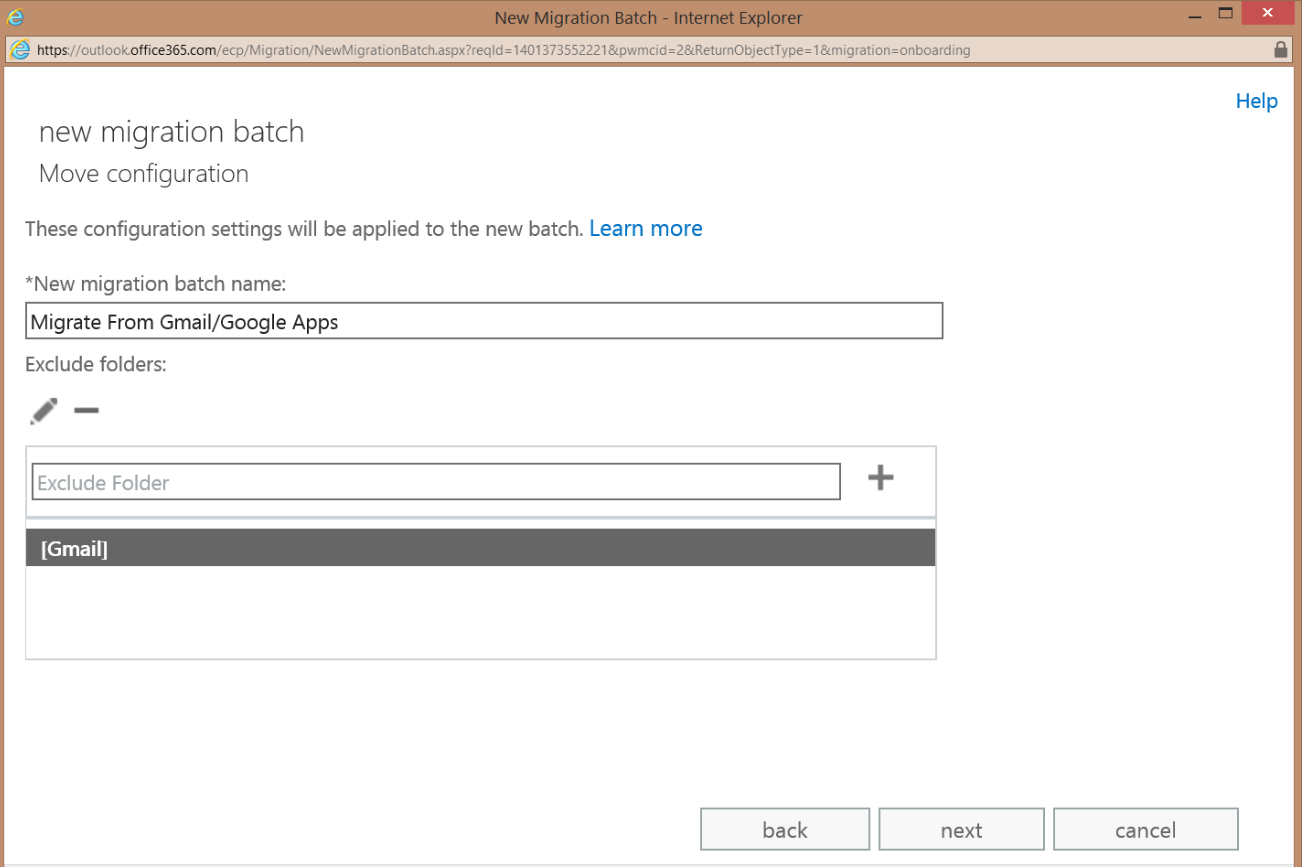Exchange Mailbox Migration Csv Format

Migrate email from an imap server to exchange online mailboxes.
Exchange mailbox migration csv format. You can specify a csv file when you use the exchange admin center eac or the new migrationbatch cmdlet in exchange online powershell to create a migration batch. Csv files for mailbox migration. But it s a good idea to migrate users in several smaller batches. With that list you can get more information about the mailboxes of the users.
The header for this column must be named emailaddress. Each row in the csv file that you use to migrate on premises exchange mailboxes to the cloud in a staged exchange migration should contain information about the on premises mailbox. You need to export a list of mailboxes to a csv file in exchange server. If you re going to.
After you select a csv file microsoft 365 or office 365 checks the csv file to make sure that. Batch migration involves the use of a csv file containing both the source. A local move request for mailboxes that are specified in a csv file is known as a migration batch and uses the new migrationbatch cmdlet. A csv file for an imap migration batch can have maximum of 50 000 rows.
Manually moving them would be a difficult task. On the select the users page choose browse and select the csv file to use for this migration batch. So you need a different approach to migrate multiple mailboxes. For more information about the csv file requirements for local move requests see csv files for mailbox migration.
For more information about imap migrations see the following topics. You can use a comma separated values csv file to bulk migrate a large number of user mailboxes. Export a list of mailboxes to csv through powershell. It uses comma separated.
In this article you will learn how to do it through powershell. This csv file contains a single column with the email address for the mailboxes that will be moved. Choose new migrate to exchange online. Prepare a csv file.
That is why you need to perform a batch migration. Many times exchange administrators have to move mailboxes in bulk to a different database. Such a list can be important. On the select the mailboxes screen locate the csv file that you created in step 1 and then click next.
To export this list to a csv file click the ellipsis button and from the drop down menu choose export data to a csv file fig. In the window that opens tick checkboxes next to the user data you want to export fig. On the select a migration type page choose staged migration next. Use the exchange management shell to create a local move request from a csv file.
Creating migration batch for a local move where the mailboxes in the specified csv file are moved to a different mailbox database. Exporting mailboxes to a csv file. The following screen shot shows an. For example there is a mailbox migration coming.
User mailboxes shown in the exchange admin center.
